2025.02.24
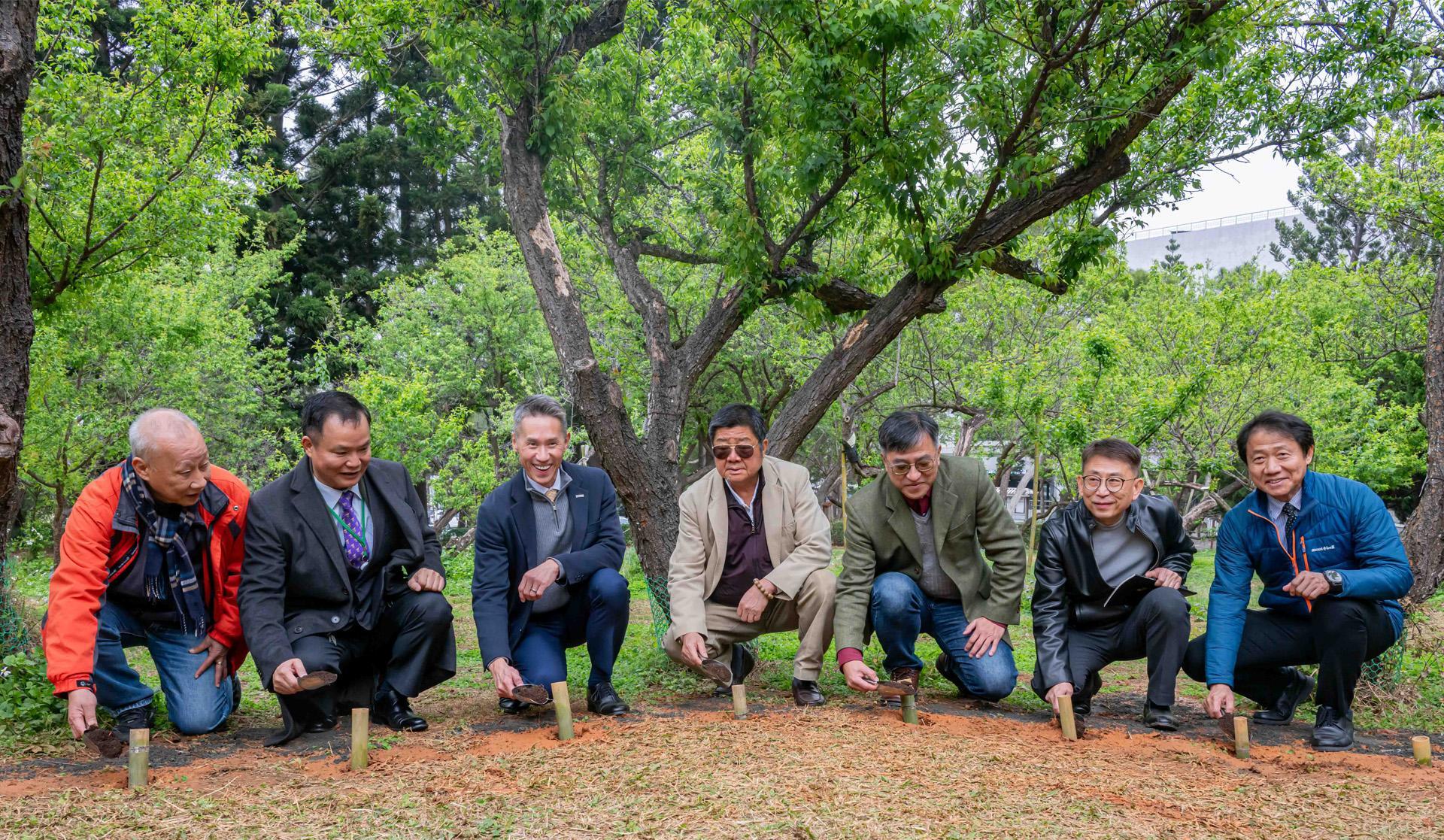
Initiating the plan to revitalize the Mei Garden. From left to right: Office of Alumni Service and Resources Development former director Min Lee (李敏), Robert Tsai (蔡朝陽), W. John Kao (高為元), TOTRA director San-Chi Chen (陳三奇), Hsiang-Kuang Chang (張祥光), TOTRA executive director Jin-Zhou You (游金洲), and assistant vice president for general affairs Hsien-Hsiang Liu (劉先翔).
The Mei Garden at National Tsing Hua University (NTHU) in Taiwan was established in the 1960s to commemorate the school's founding president, Yi-chi Mei (梅貽琦), but its old plum trees, mostly over 60 years old, are suffering from trunk rot. However, thanks to a donation from alumnus and Swancor Technology chairman Robert Tsai (蔡朝陽), NTHU has partnered with the Taiwan Old Tree Rescue Association (TOTRA) to reinvigorate the plum trees.
NTHU president W. John Kao (高為元) said that the Mei Garden is a campus landmark cherished by all, and keeping it in good shape is a top priority. Thus, the school has arranged for a team of professional arborists to treat the plum trees, which are expected to recover by next year.
Hsiang-Kuang Chang (張祥光), vice president for general affairs, said that there are 299 plum trees in the Mei garden, 201 of which are over 60 years old; most are flowering plums (Prunus mume), the variety most closely associated with art, literature and everyday life in Chinese culture. Despite regular maintenance over the years, many of the trees have begun to suffer from trunk rot and desiccated branches.
The university has launched a four-year conservation plan, beginning with emergency treatment for sick trees, and followed by adding soil improvements to enhance their vitality. Afterwards, the entire garden will undergo a thorough renovation. “The goal is to restore the Mei Garden to its former glory without using toxic chemicals,” explained Chang.
Tung-Chi Liu (劉東啟), executive director of the Taiwan Old Tree Rescue Association, said that soil hardening was the main cause of the problem. By taking soil samples he found that the top 60 centimeters of soil around the trees has become so compacted that the roots are unable to absorb a sufficient amount of water, causing the branches to wither.
The Association will use a technique called “water jet soil perforation” to drill one-meter-deep air holes around the plum trees, apply materials to loosen up the soil and then add probiotic fertilizer to help root development. Liu said that the treatment is expected to increase the number of leaves and flowers on the trees by next spring. Last year, he demonstrated this treatment on two plum trees, and they have already begun to recover their former vitality.
Tsai said that the Mei Garden is of great significance to everyone at NTHU. When he was a student at NTHU in the mid 1980s, he often brought his relatives and friends to the Mei Garden to appreciate the scenery and learn about the history of the school. He recalled how inspiring it was to practice soccer next to the Mei Garden and feels honored to have an opportunity to help bring it back to its former glory. He moreover lamented that the Mei Garden used to be a great spot for socializing, but now it's only a shadow of its former self.
When Tsai was in Nantou in January of last year, he was impressed by the thriving old plum trees he saw there, and resolved to come up with a plan to reinvigorate the trees in the Mei Garden.
Chun-Shan Wu (吳春山), honorary chairman of the Old Tree Rescue Association, said that protecting old trees is essential for preserving our ecological and cultural environment. The plan for revitalizing the Mei Garden combines research, education, and participation, and will serve as a model for ecological education in Taiwan.
Yi-chi Mei passed away in 1962 and his remains were interred in a tomb located in what is now the Mei Garden, which was planted with plum trees, symbolizing the spirit of NTHU. Since then, the Garden has become the site for various traditions that have been passed down from generation to generation, such as freshmen visiting the Garden to pay their respects.
The Mei Garden was registered as a historic site by Hsinchu City in 2021, and every February it attracts tourists during the plum blossom viewing season.
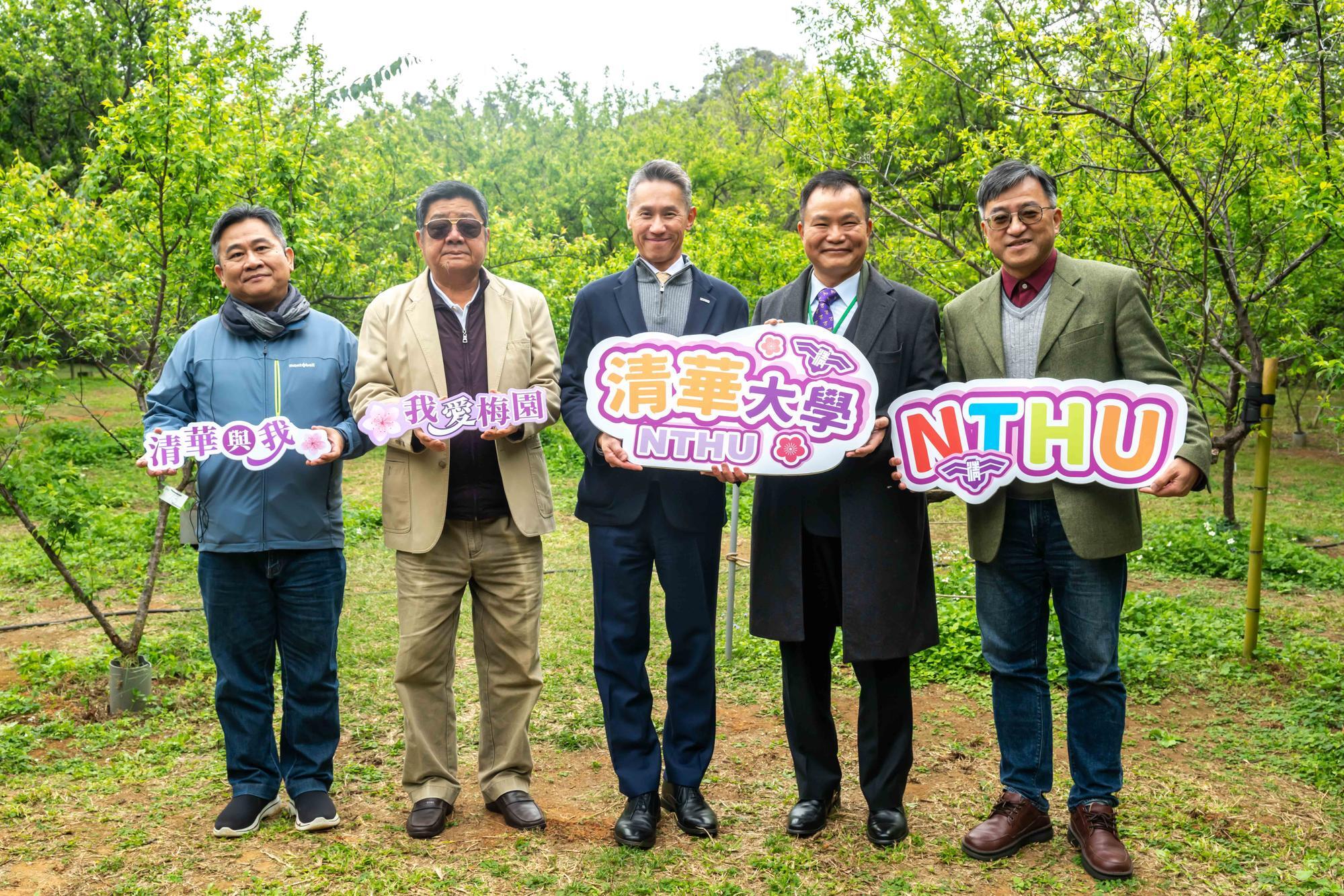
Announcing the plan to revitalize the Mei Garden. Right to left: Hsiang-Kuang Chang (張祥光), Robert Tsai (蔡朝陽), W. John Kao (高為元), San-Chi Chen (陳三奇), and Tung-Chi Liu (劉東啟).

Announcing the plan to revitalize the Mei Garden.
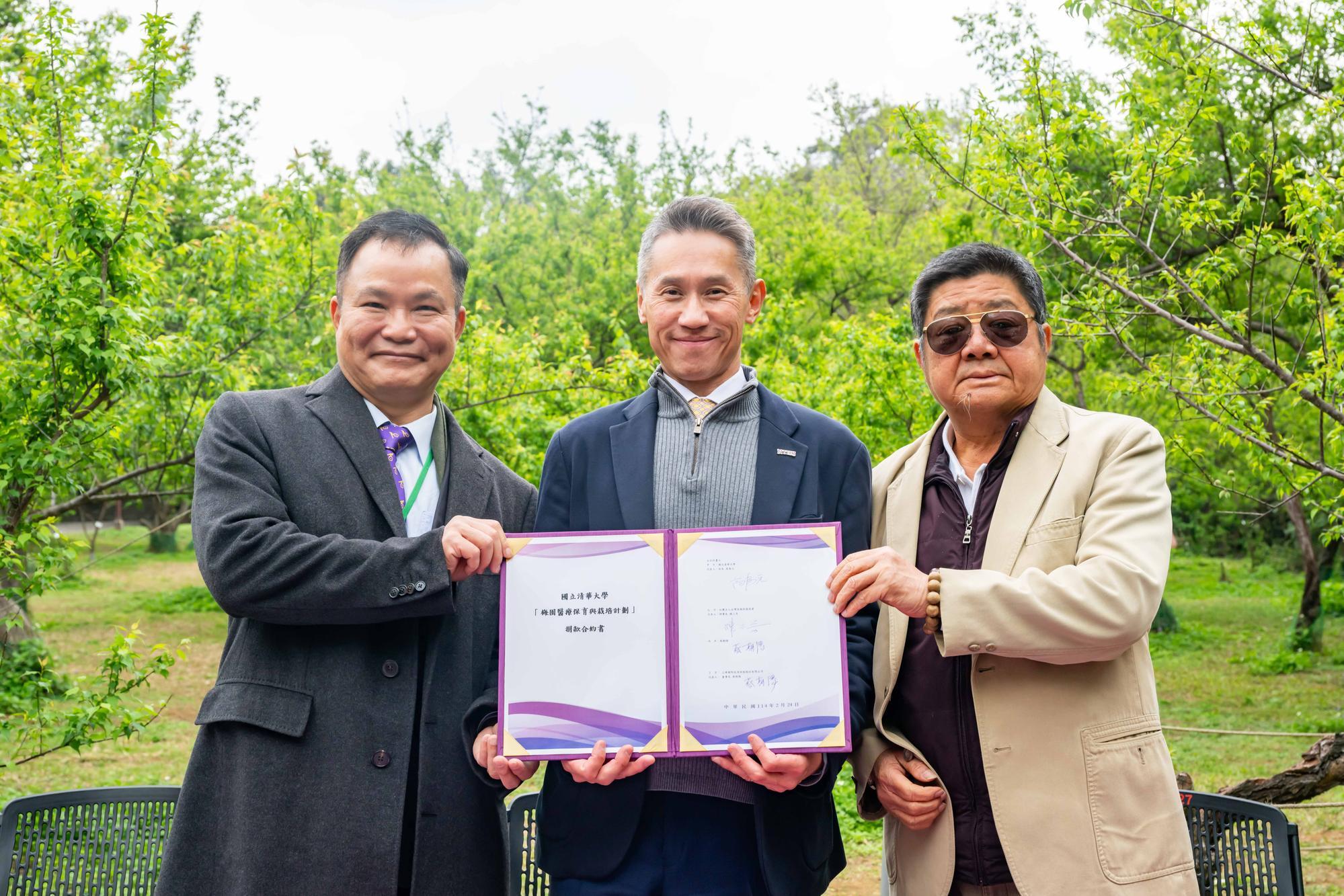
W. John Kao (高為元) (center), Robert Tsai (蔡朝陽) (left), and San-Chi Chen (陳三奇) displaying the contract for the project.
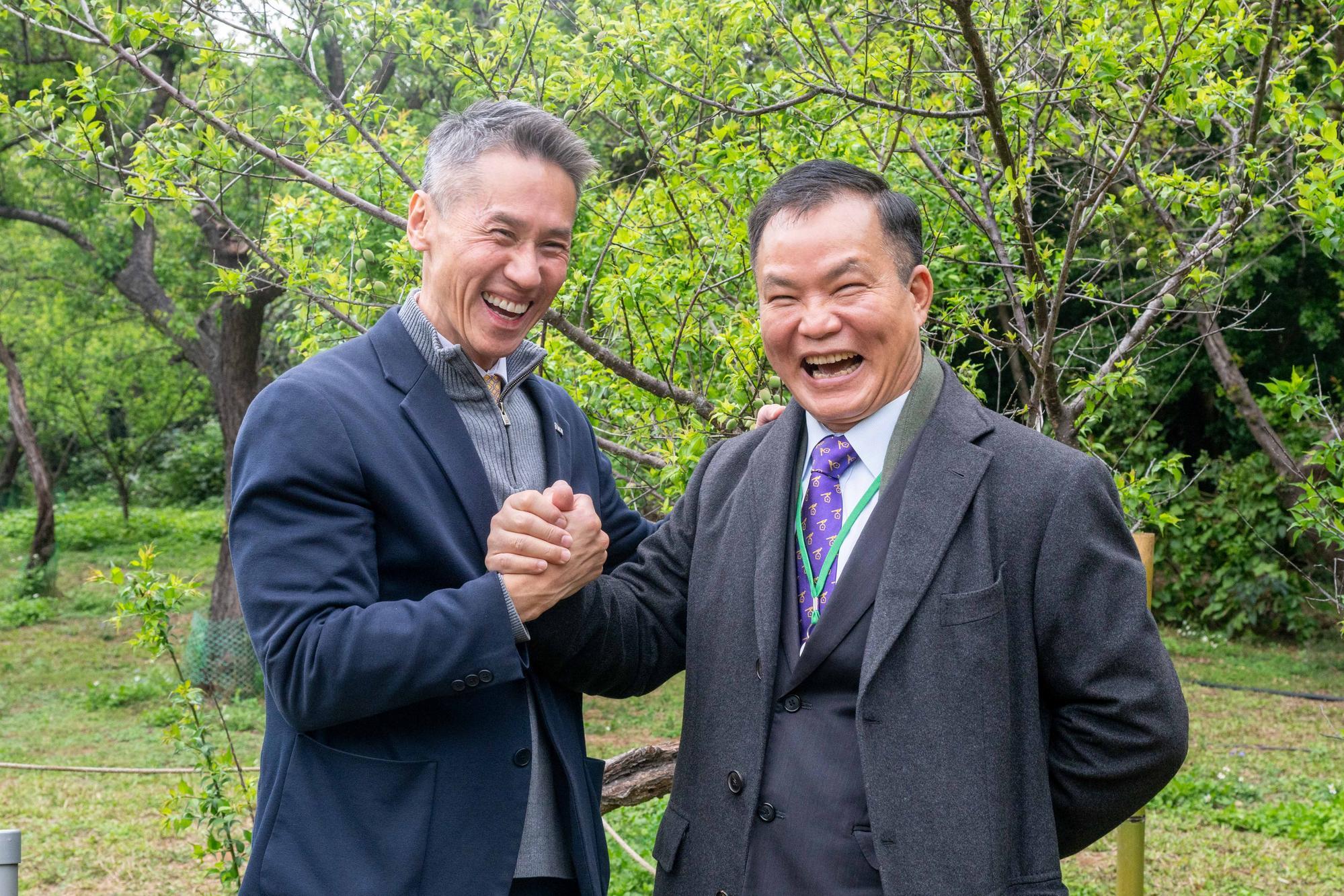
W. John Kao (高為元) (left) thanking Robert Tsai (蔡朝陽) for sponsoring the project.
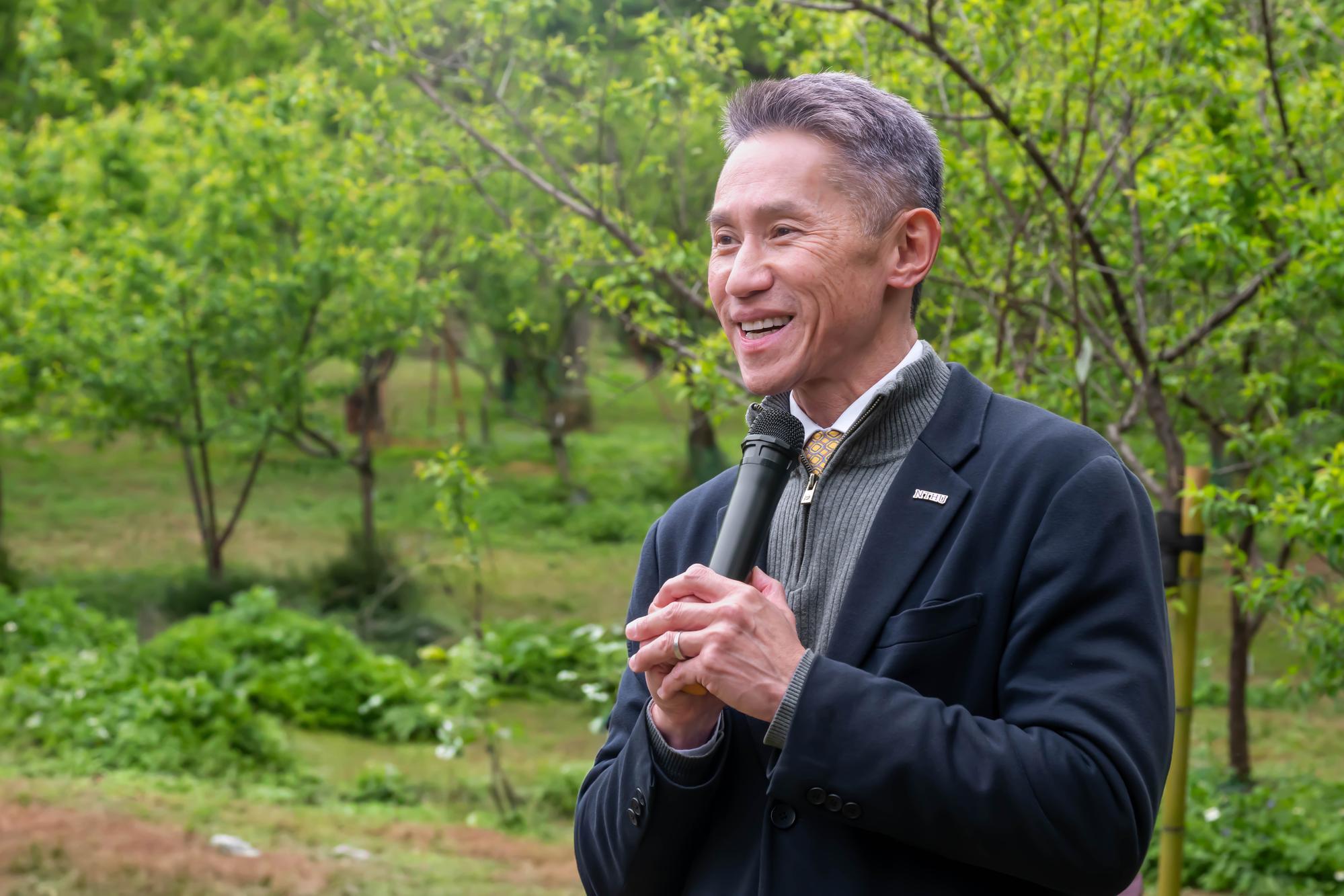
W. John Kao (高為元) is looking forward to seeing the Mei Garden in full bloom early next year.
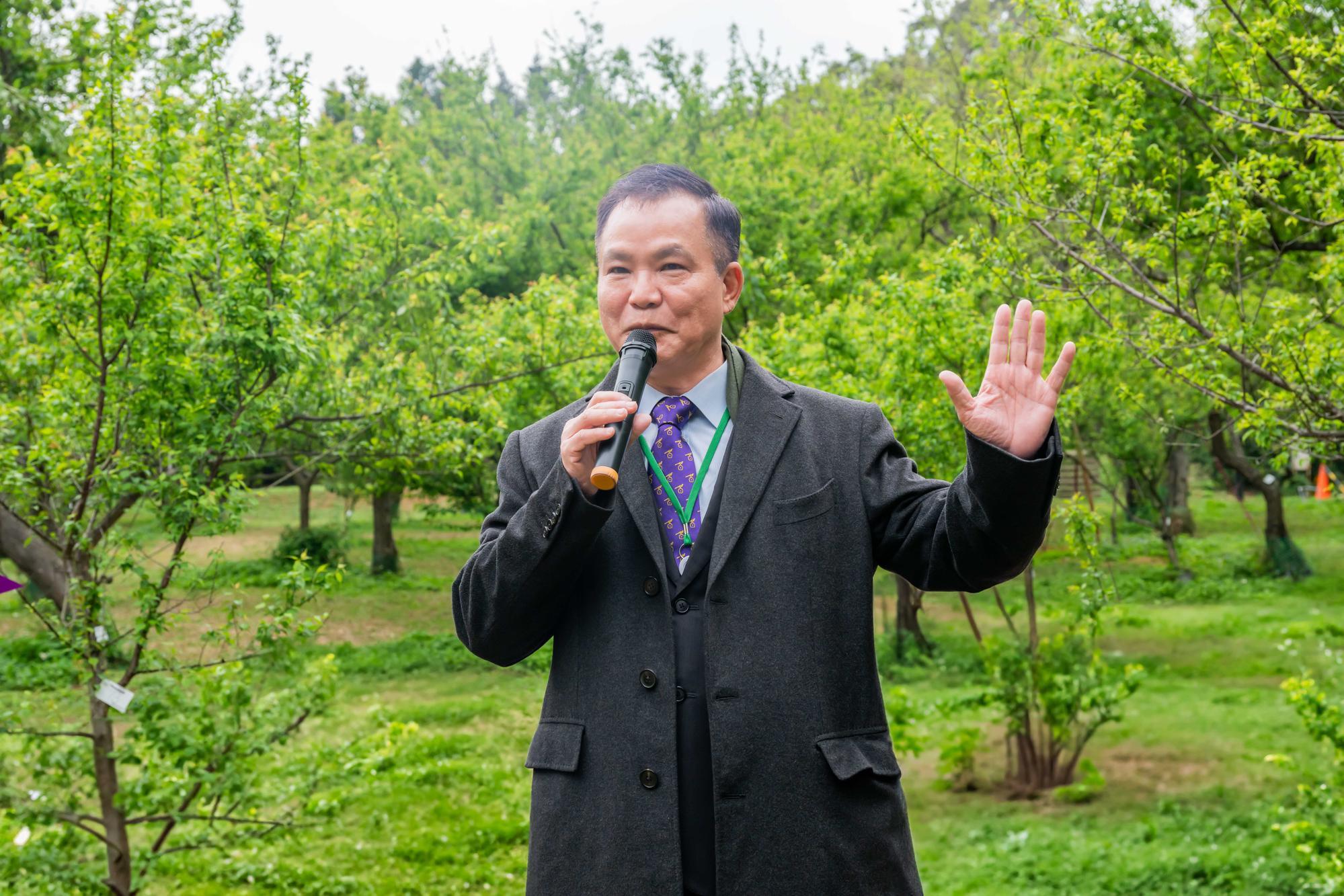
As an alumnus of NTHU with fond memories of the Mei Garden, Robert Tsai (蔡朝陽) leaped into action when he learned that its plum trees were not doing well.
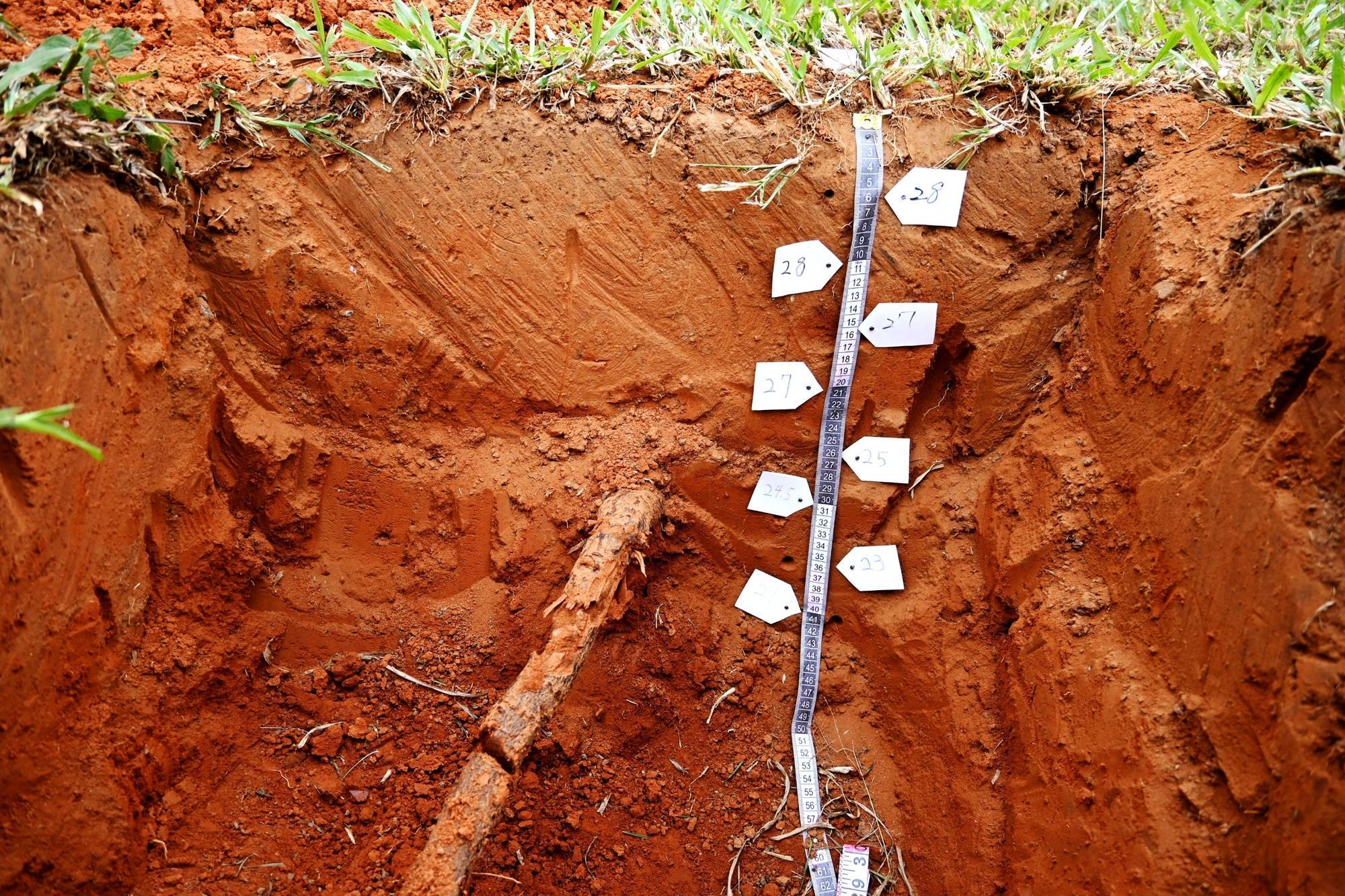
By taking soil samples, it was found that the top 60 centimeters of soil around the trees has become so compacted that the roots are unable to absorb a sufficient amount of water, causing the branches to wither. (courtesy of TOTRA)
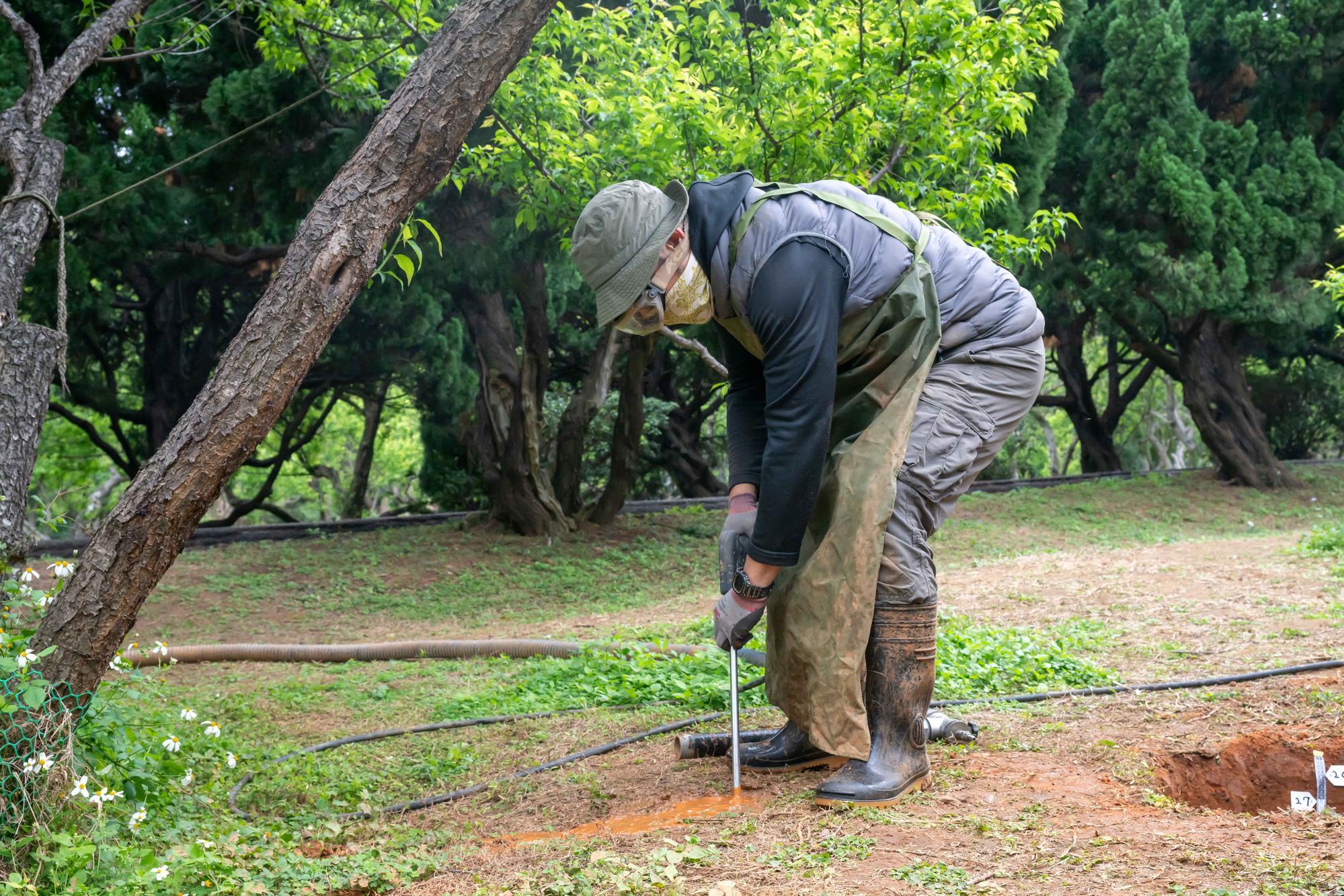
Using a technique called “water jet soil perforation,” the TOTRA will drill one-meter-deep air holes around the plum trees.
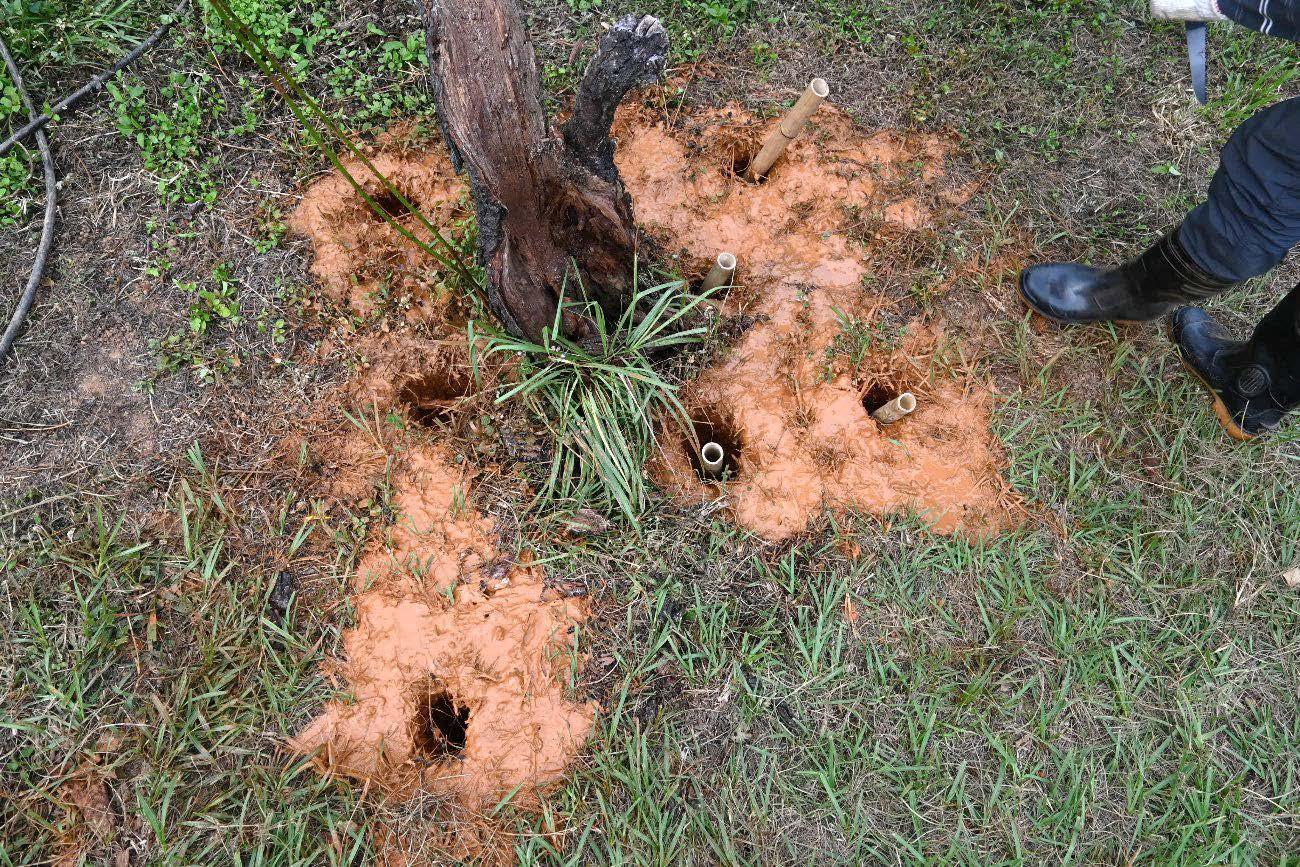
Using a technique called “water jet soil perforation,” the TOTRA will drill one-meter-deep air holes around the plum trees.
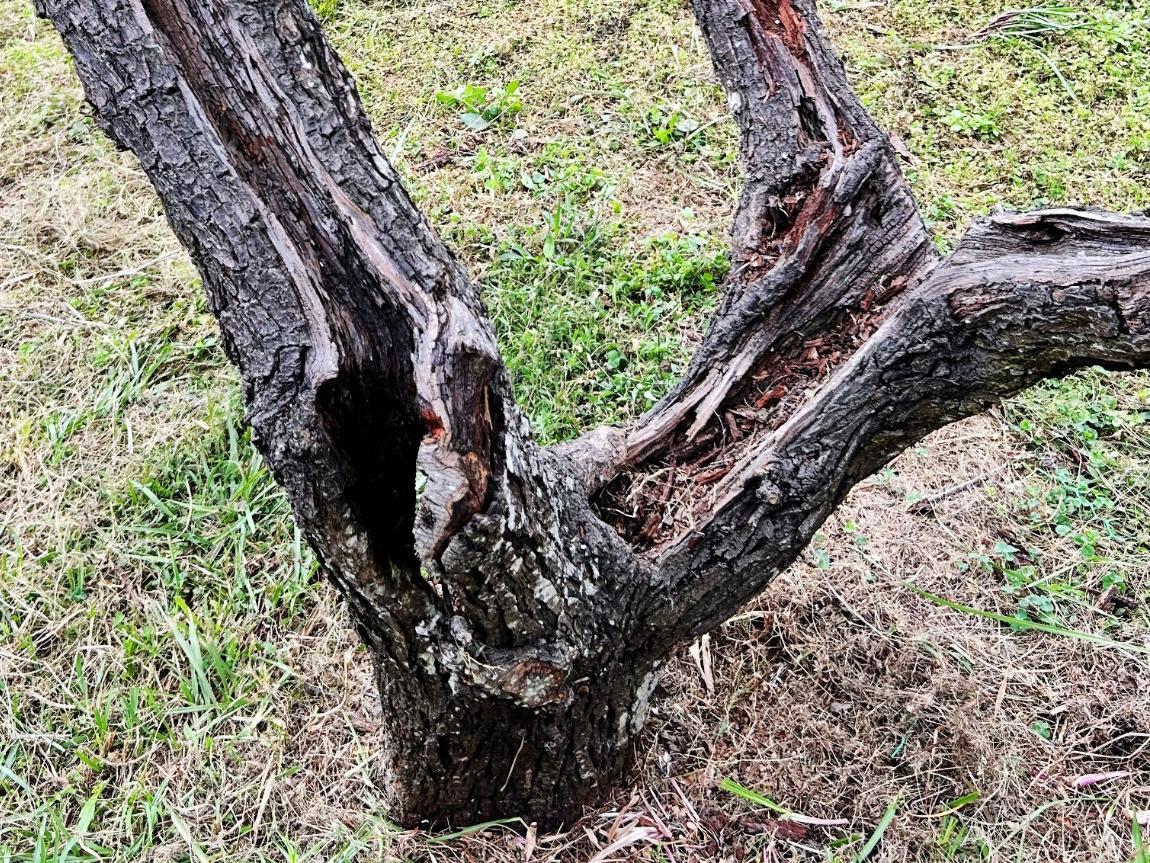
The old plum trees in the Mei Garden are suffering from a type of trunk rot commonly referred to as “sunburn.” (courtesy of TOTRA)
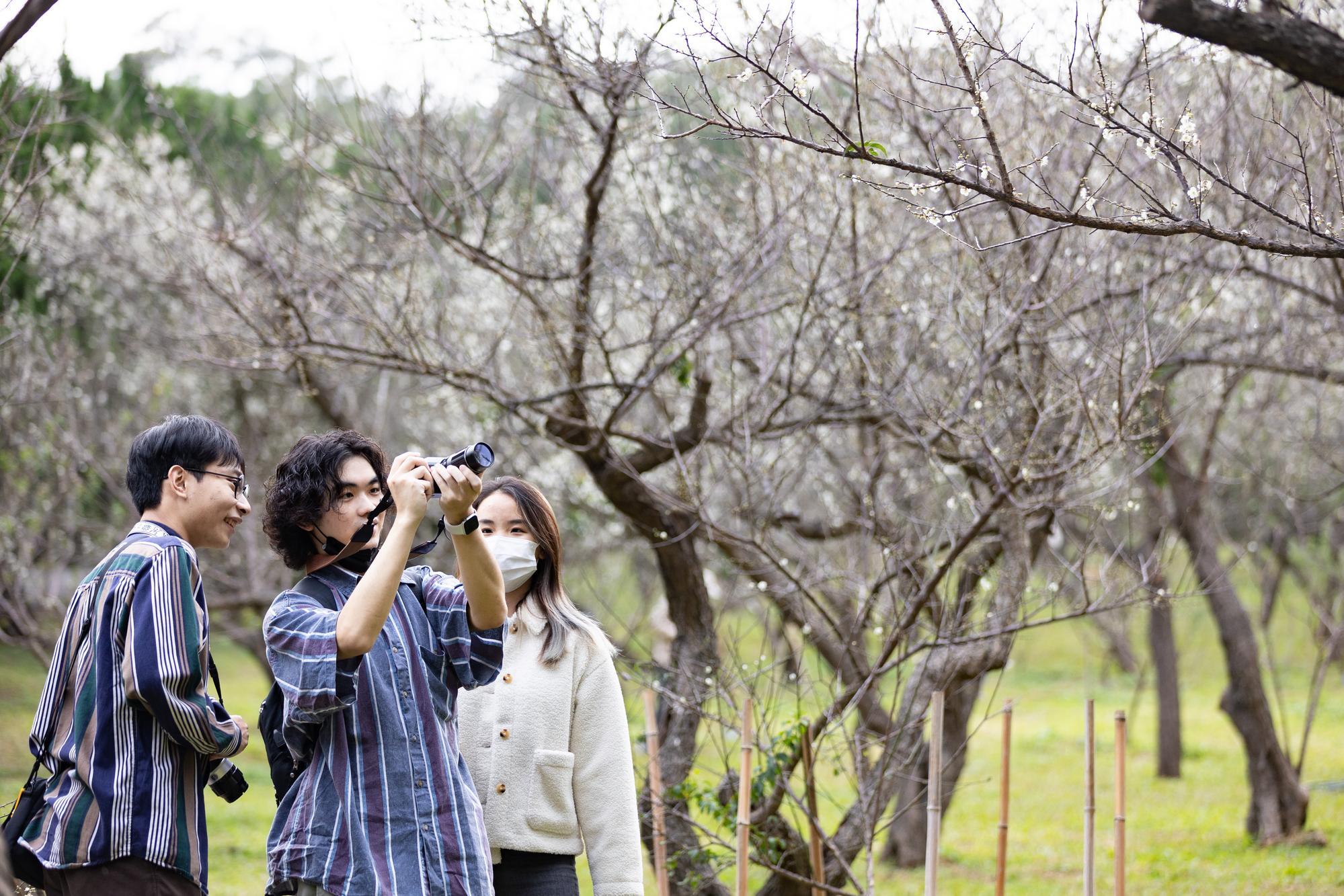
Every February the Mei Garden attracts tourists during the plum blossom viewing season.
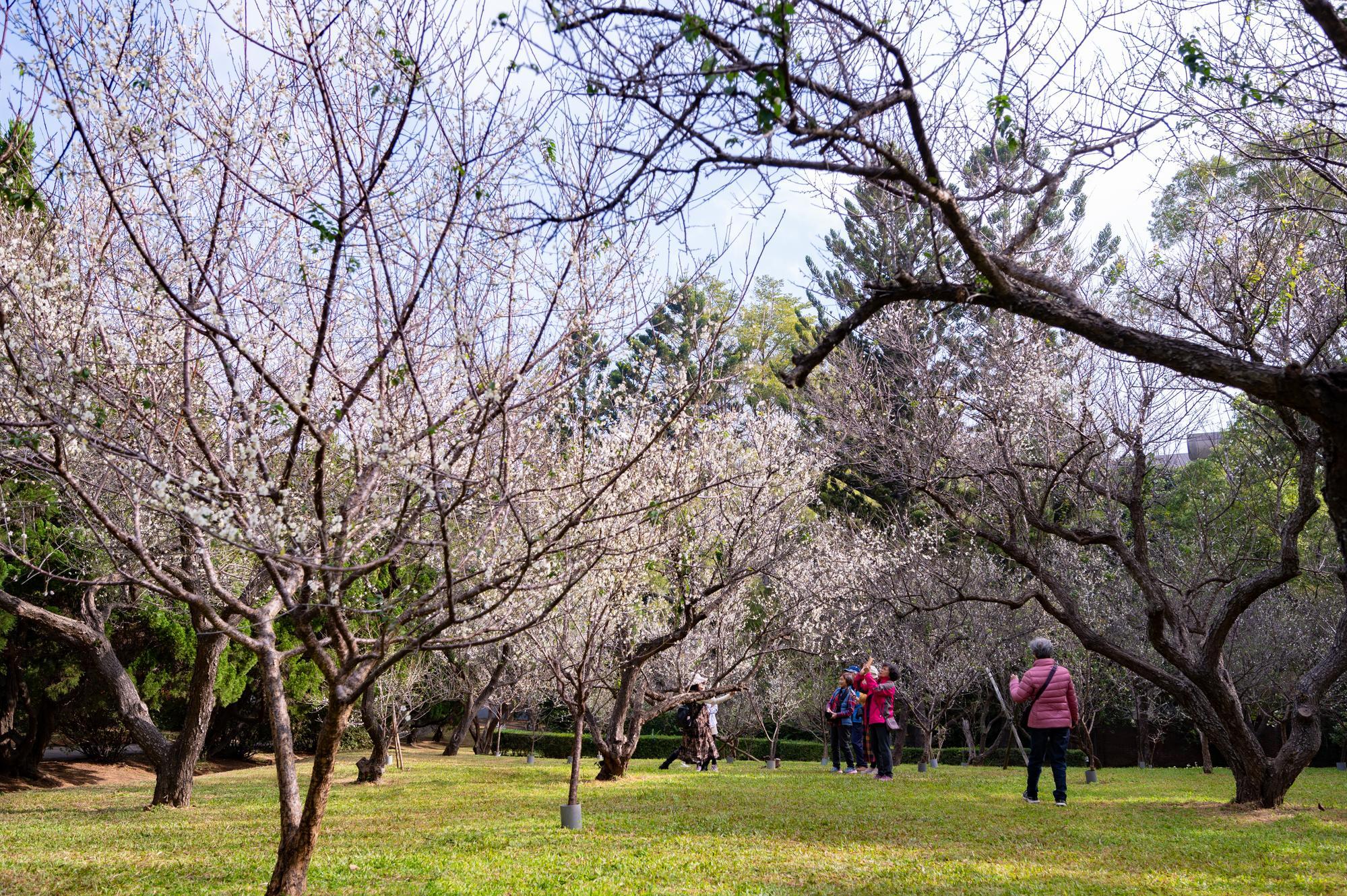
The Mei Garden is a favorite destination in Hsinchu City for admiring blossoming plum trees.













